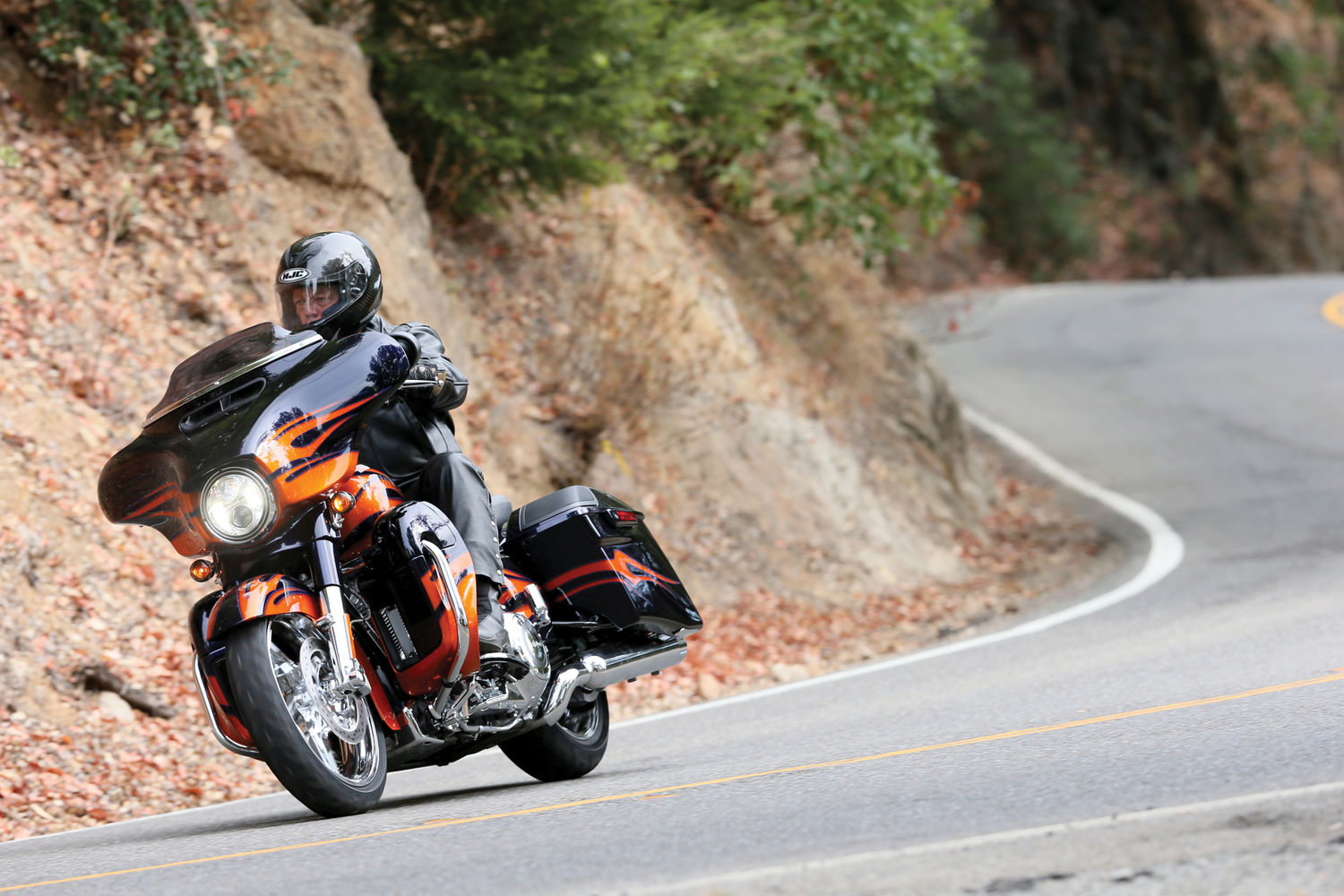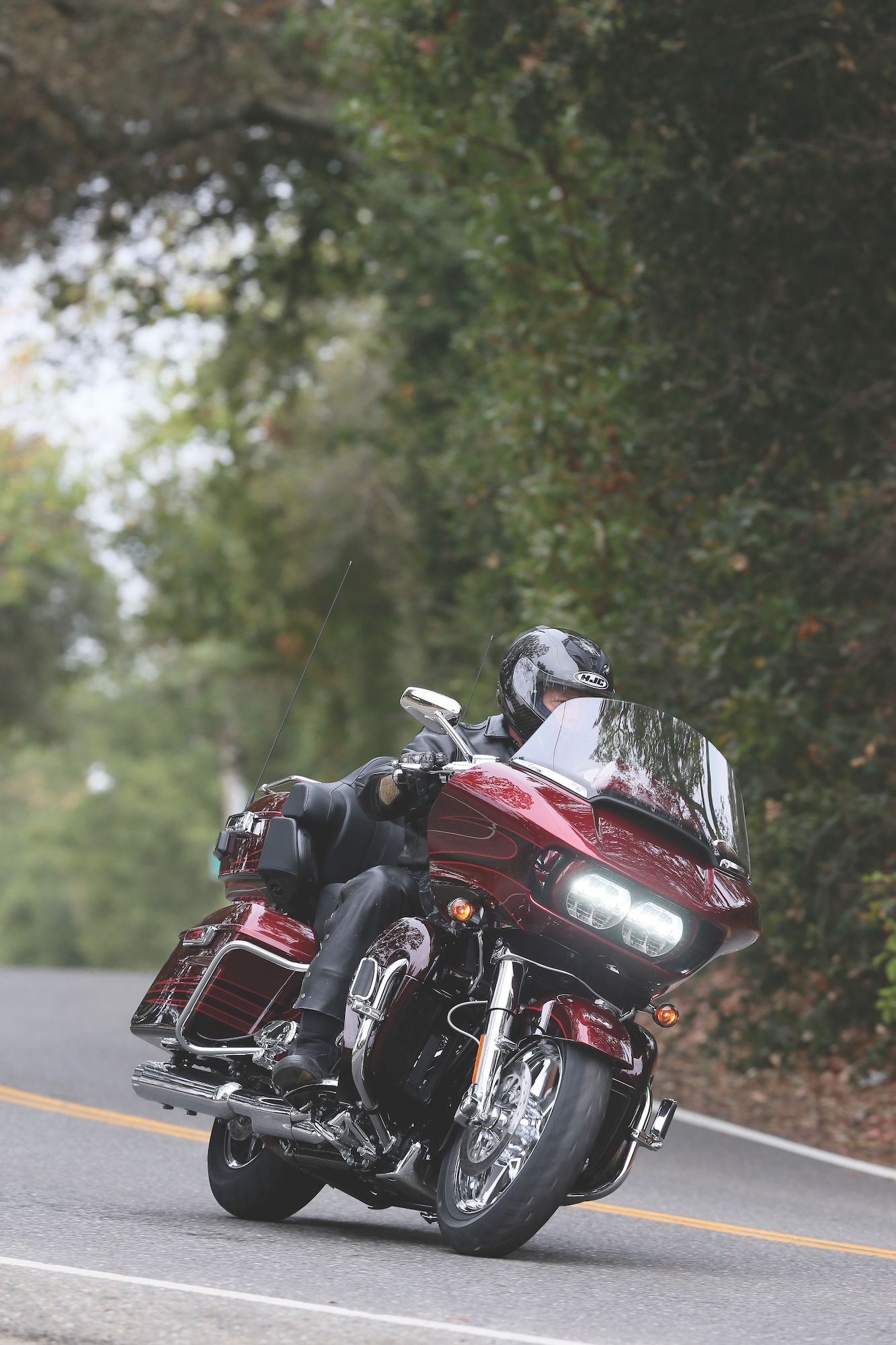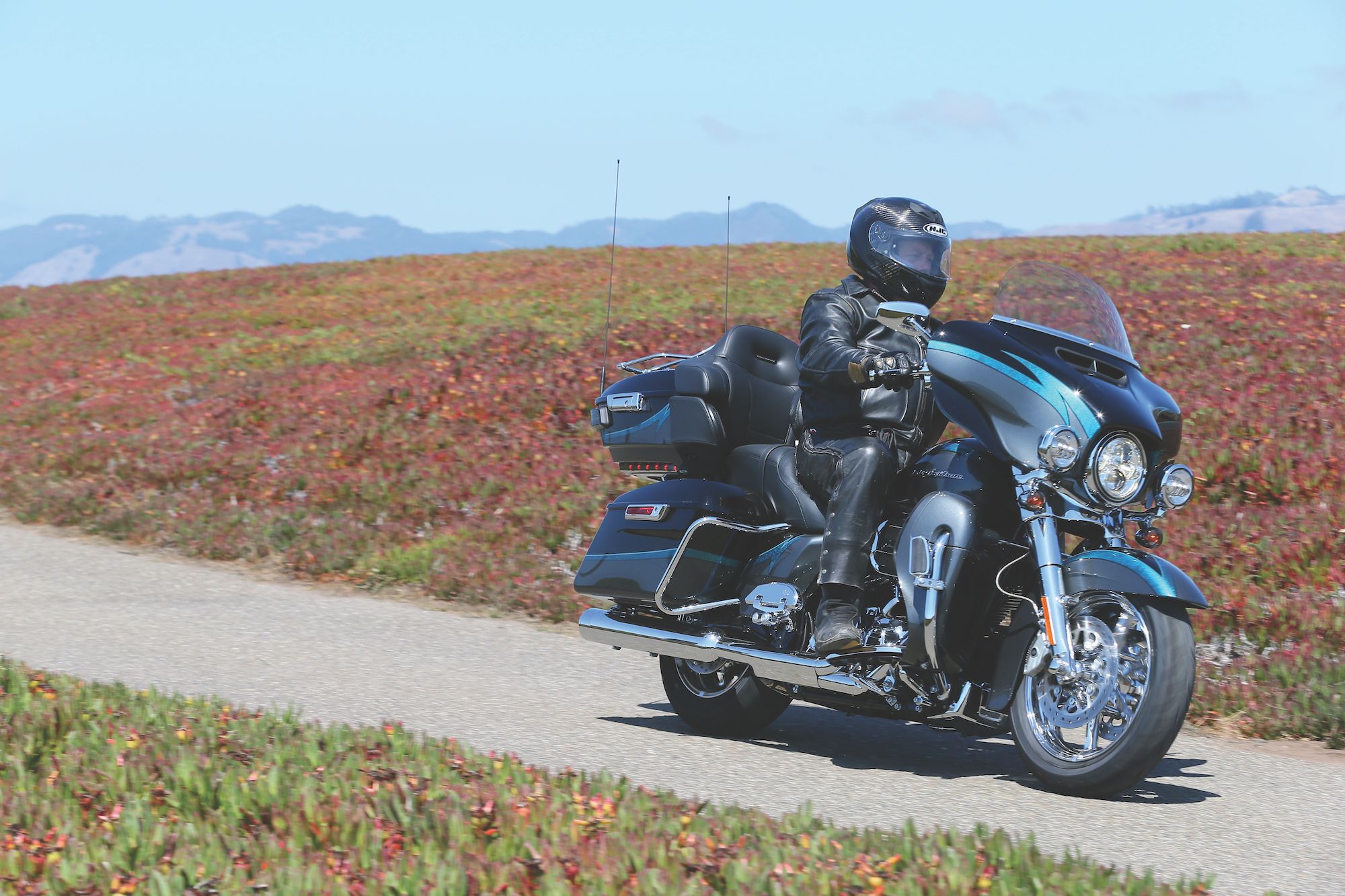2015 Harley-Davidson Models: No Rider Left Behind

Milwaukee’s Motor Company has rolled out its new 2015 touring and cruiser big-twin lineup in Sonoma, near the heart of California’s scenic wine country. Project RUSHMORE, which was introduced last year as a commitment from Harley-Davidson to listen to its customers, and construct machines based on their inputs, continues to build momentum. Touring enthusiasts will be pleased by the reappearance of the Road Glide, which returns with substantial revisions after a one-year hiatus from the lineup.
Another significant new model is the Freewheeler trike, which will be the smaller sibling to the Tri Glide Ultra trike. There are also several new Low models designed to be easier to handle, appeal to those folks who have a small inseam, and attract new buyers who may not otherwise purchase a Harley. Two new touring models—the Electra Glide Ultra Classic Low and the Ultra Limited Low—were built with lower suspensions for a lower seat height, and the controls are repositioned to allow for a shorter reach as well.

For 2015, all Softail models receive brake systems that require less effort to operate, plus standard anti-lock braking. Additionally, there are subtle changes throughout the model line.
Other additions to Harley-Davidson’s overall lineup include the all new Street 500 and 750 models, created to bring in younger and entry-level consumers. These will be slotted under the Sportster line. Altogether Harley is offering 36 production models, including CVO models and trikes. A true paradigm shift is the Project LiveWire electric concept motorcycle—launched to gauge public interest and test the viability of a battery-powered machine.
Road Glide
The Road Glide’s large and distinctive fairing was redesigned for 2015, along with other changes. The Road Glide has the only frame-mounted fairing among Harley’s touring models, and it is my favorite because it minimizes the effect from wind blasts on steering control.

Previously, Road Glide riders have suffered helmet buffeting. It was partly caused by how far back the rider sits from the windshield (required to allow the handlebar to turn). The effectiveness of the fairing and windscreen creates a low-pressure area and subsequent “pushing” and helmet buffeting.
To eliminate this, Harley performed extensive wind tunnel work. This led to a reshaped fairing that is 1.4 inches narrower—with what is called a “triple splitstream vent”—to direct some air ahead of the rider and reduce turbulence. A center top dash vent can be closed in cold weather. The Road Glide’s handlebar was also reconstructed to bring the grips 5.5 inches closer to the rider. At highway speeds it works nicely in reducing buffeting and wind push. The reduced turbulence also improves sound-system fidelity.
Road Glides come with the Boom! Box Infotainment System featuring a 4.3-inch display with AM/FM stereo, Weather Band, and a USB port to connect iPods or other MP3 players. Output is 25 watts per channel via two weatherproof dash-mounted speakers. An upgrade to a 6.5-inch touch screen with GPS is offered, and it’s standard on Road Glide Specials. Thumb-controlled joysticks operate the audio and nav systems.

New Daymaker LED headlights give the bikes a new appearance and better lighting with less power draw. Check the right option box on the order form for the Road Glide Special to enjoy extras such as the more powerful Boom! Box Infotainment System and Reflex linked brakes with an anti-lock braking system (ABS).
All Road Glides are now powered by the air-cooled High Output Twin Cam 103 engine. Saddlebags are also improved—with easier access when seated—thanks to handles relocated to the front.
Freewheeler Trike
Harley-Davidson’s product planners are looking for ways to attract buyers from a broader base, including older riders and folks who may not feel confident they can hold up a fully-loaded motorcycle in every situation. To bring in these potential customers, The Motor Company has added a second distinct trike model, called the Freewheeler. Freewheelers are smaller and lighter than the existing Tri Glide model. However, they still have the 103 cubic-inch engine, so they are quicker and more nimble than their stable mate. Power goes to the rear wheels via a six-speed transmission and hydraulically actuated clutch that significantly reduces lever effort. Reverse is provided by an electric motor, which is slow but controllable and gets the job done for short backups. A low rise ape-hanger handlebar and bobbed-style fenders give the Freewheeler a touch of attitude.

Driving a trike is very different from riding a traditional two-wheeled motorcycle. You can’t lean the machine into a turn and steering effort is greater than on a similar motorcycle. While balancing isn’t required, it is necessary to constantly be vigilant of the greater width of the wheels and fenders. Before purchasing one, potential buyers should have some safety instruction and take a long demo ride.
Softail
All Softail models get upgraded brakes with 40 percent less lever effort, including better control feel and modulation. ABS is now standard on all Softail models, with the exception of the Slim, which offers ABS optionally. All of the front brake parts are new, with four-piston calipers, grippier pads, big 300mm front brake rotors, and a master cylinder that has a higher ratio with lower lever pull for a given stopping force. Both master cylinders and the calipers were redesigned for better looks, too. On the road, the upgraded brakes have good feel with lower effort, and the ABS is unobtrusive in normal riding but does an excellent job when needed.

Electra Glide
The Electra Glide is Harley’s most popular touring model—it’s important for them to get it right. As part of Project RUSHMORE, both the Electra Glide Ultra Limited Low and Ultra Classic Low models now feature an even lower seat height—sure to make shorter riders feel more at ease. Electra Glide Ultra Classic Low models get a ground-scraping 25.6-inch saddle height when laden, and it is positioned closer to the fairing to reduce reach to the controls. To further accommodate smaller riders, hand grips are smaller in diameter, the handlebar is narrower and 2 inches closer to the rider, and suspension height is dropped an inch at each end.
CVO Series
Harley’s premium CVO series offers four models this year: the Limited, Softail Deluxe, Street Glide, and Road Glide Ultra. Each comes with a more powerful Screamin’ Eagle Twin Cam 110 cubic-inch powerplant rather than the 103-incher found in lesser models. All CVO Street Glides come with powerful Boom! audio systems—pounding out 300 watts of sound through a quartet of speakers. Even on the interstate, the sound can punch through a full-face helmet.

At the very top of the line is the CVO Road Glide Ultra. Laden with chrome and billet goodies and resplendent in custom color schemes, this uber-touring model is powered by the Screamin’ Eagle twin-cooled TC110 engine, which is Harley-Davidson’s most powerful engine.
The changes for 2015 represent the gradual but continual improvements that The Motor Company is known for. This conservative approach has worked for more than 111 years while its competitors have come and gone.
